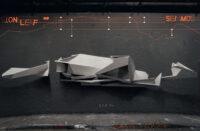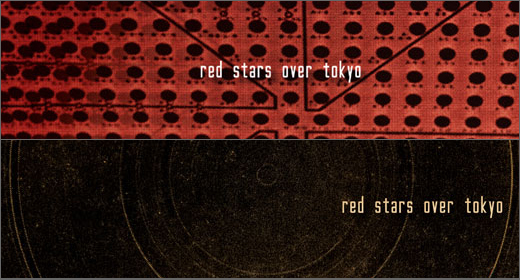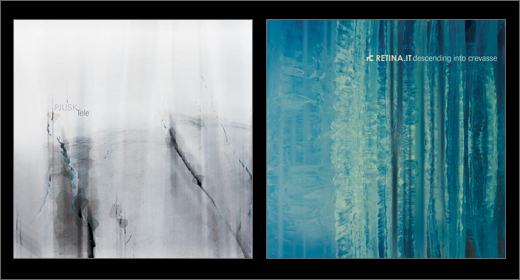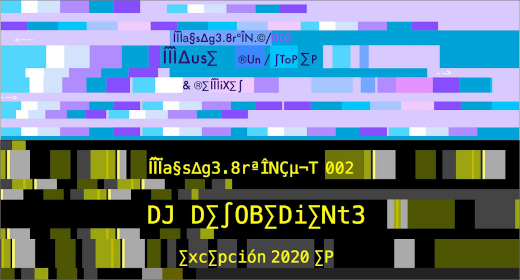(November 2009) Two releases on Tokyo’s neophyte Trumn label each with their own peculiarly Japanese take on ambiance. In the case of Yui Onodera’s, label head, Hideho Takemasa, describes Entropy as “the most sought-after item of all his releases,” partly a consequence of a highly limited first release (on Onodera’s own Critical Path), but, to be fair, also due to its compelling quality. Still a relative youngster at 27, he’s lately made increasing incursions, with a series of albums on taâlem, Mystery Sea, and/OAR, and Gears of Sand. Entropy betrays no signs of age despite its 5-year vintage, sounding fresh as ever; the kind of work that’s blazed (or rather ‘lightly singed’) a trail for the small-gesture large-affect micro-symphonics of a new wave of cosy-drone cottage industrialites – labels like Home Normal, Low Point, Under the Spire and Hibernate. And also led the way for fellow rising sun ‘scapers like Chihei Hatekayama and Hakobune.
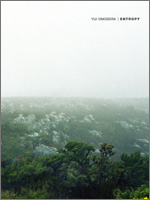
Entropy‘s parts – a layering of harmony from guitars, streaks of field-found noises off and signal processing – will be familiar (see all of the above labels). It’s a familiarity that breeds admiration not contempt; not that Onodera does it better so much as he has the touch. And touch is what endows music of this stripe with the compelling quality mentioned earlier – what separates this soundscape sheep from the goaty herd. Entropy‘s constituents, once established, are then variously configured and held up to the light, or maneuvered gently through the shade. If there is a Japanese aspect discernible in these elegant compositions, it’s their uncluttered nature that leaves space for still substantial bounty. Simple chordal shifts, a delicate reticence of melody playing at the edges, frequency inflections and timbral tweakage. As the border between surface and depth is navigated, Onodera’s locus/focus ranges from the geo-spatial mysteries of Biosphere to the stunned-bliss stargazing of SotL, taking in the more intimate microscopics of Celer. The intricacy of the minutiae hidden in the folds and rhizomes of sound open up to scrutiny, like snowflakes through the lens of Onodera’s focus-shifting micro-viewer. A certain density no sooner develops than it cedes into more minimal tonal terrain, where pacific streams emerge then resurge into more ambiguous, though ultimately benign, waters. As movements progress, immersion creeps, seeps more immanently, till “09” opens beyond the light into harmonic radiance, the chafings of field recordings below submerged by a mounting melody of expansion lifting us into “10.” Here the sensations of tone suffuse the listener with serenity, in a final dissolution of tensions. Entropy – a measure for the proportion of disorder in the universe – is always rising. Onodera’s construct is of a different order – an antidote, in fact, in aural form.
If guitar is the star of Onodera’s firmament, bass is the place for Tokyo-based improv-minimalist, Shuichi Tamaru. His Figure is leaner, even consumptive – a spartan ethnography of his lugubrious instrument’s tonality. A simple process system involving footpedals and real-time processing is set in train. Bass tones are drawn out via volume pedals, and fed to processors set to generate long-interval delays. Then further tones are spread over the seams. A head-achey bass hum that sometimes thrums with subtle shifts of processing intervention. 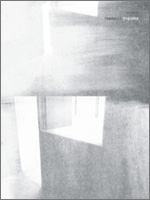 Tamaru keeps it clean and close to first bass/base, the object of his ear’s desire residing in the natural overtone layers of the instrument’s resonances. Here is a drone redolent of faraway planes passing over. There is a long dark vector snaking through evacuated terrain. Between the expanses of lowflow, off-chords peek through, now and then a rumble and a crumble. A shadowy Zen Garden-like mood prevails, pebbles and the odd rock, raking sounds relieving otherwise sparse expanses, Tamaru’s palette deliberately reined in on these lowlight tone sketches. “Torso” starts, a single string plucked and re-plucked, its decay fed to delay and captured in frozen fluidity. “Juju,” almost dynamic by comparison, growls quietly, mysterious microtonal ripples triggered by delay overlay in a dialogue with the aleatory. Tamaru’s musical philosophy of asceticism means gesture is subsumed to gaze, alternately rapt and stunned by tonal slippage and elision. The music of chance is given little voice, as improv incursions come in spurts, small timbral tweaks and frequency flickers – the short discontinuous inciding in the long continuous. And though Figure is thin gruel for those used to wallowing in textural transport, deep listeners may find here a certain elliptical beauty in these twilight tones as they arc and tilt, fade away and resonate.
Tamaru keeps it clean and close to first bass/base, the object of his ear’s desire residing in the natural overtone layers of the instrument’s resonances. Here is a drone redolent of faraway planes passing over. There is a long dark vector snaking through evacuated terrain. Between the expanses of lowflow, off-chords peek through, now and then a rumble and a crumble. A shadowy Zen Garden-like mood prevails, pebbles and the odd rock, raking sounds relieving otherwise sparse expanses, Tamaru’s palette deliberately reined in on these lowlight tone sketches. “Torso” starts, a single string plucked and re-plucked, its decay fed to delay and captured in frozen fluidity. “Juju,” almost dynamic by comparison, growls quietly, mysterious microtonal ripples triggered by delay overlay in a dialogue with the aleatory. Tamaru’s musical philosophy of asceticism means gesture is subsumed to gaze, alternately rapt and stunned by tonal slippage and elision. The music of chance is given little voice, as improv incursions come in spurts, small timbral tweaks and frequency flickers – the short discontinuous inciding in the long continuous. And though Figure is thin gruel for those used to wallowing in textural transport, deep listeners may find here a certain elliptical beauty in these twilight tones as they arc and tilt, fade away and resonate.
Entropy and Figure are both out now on Trumn. [Purchase]








